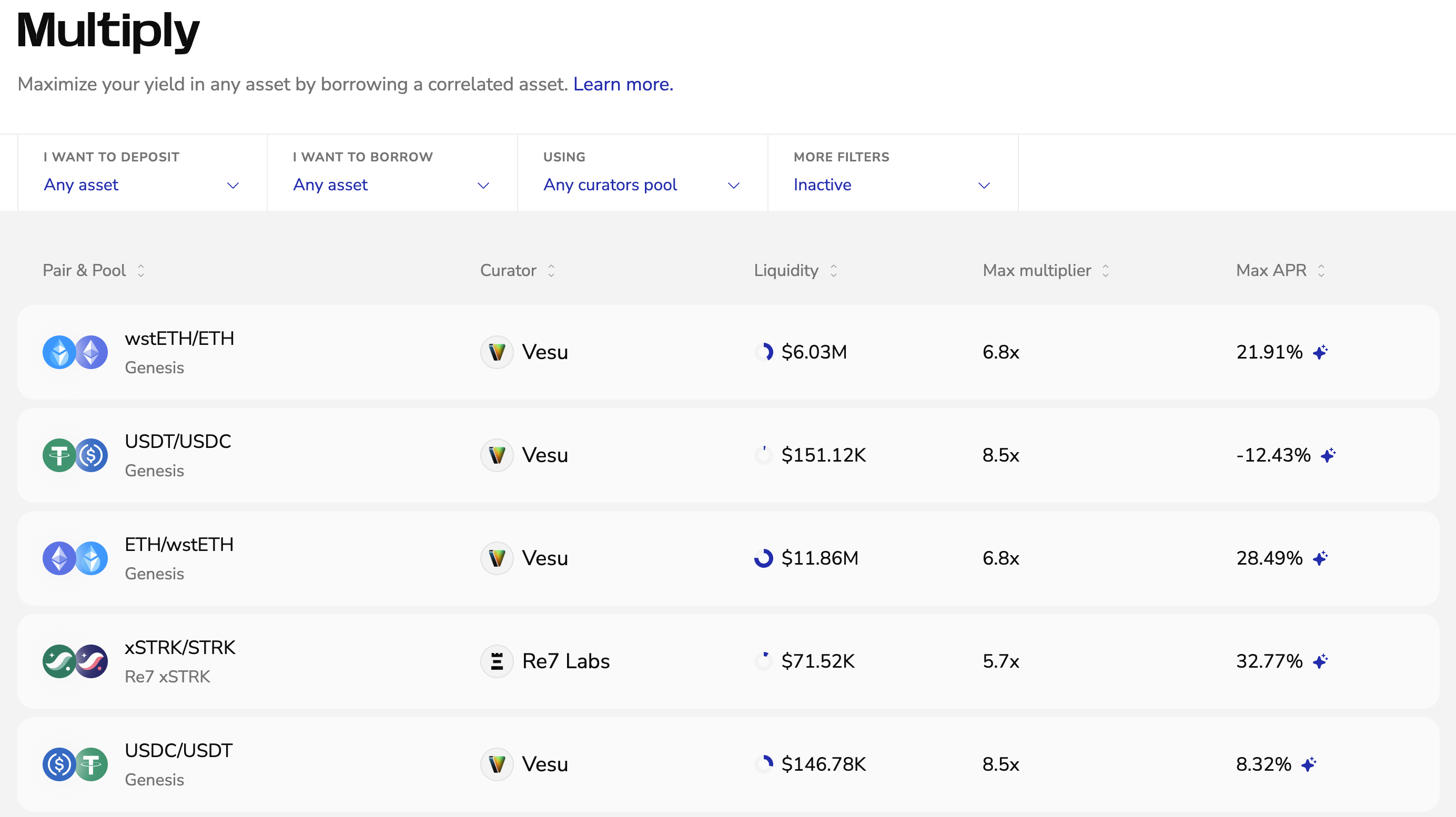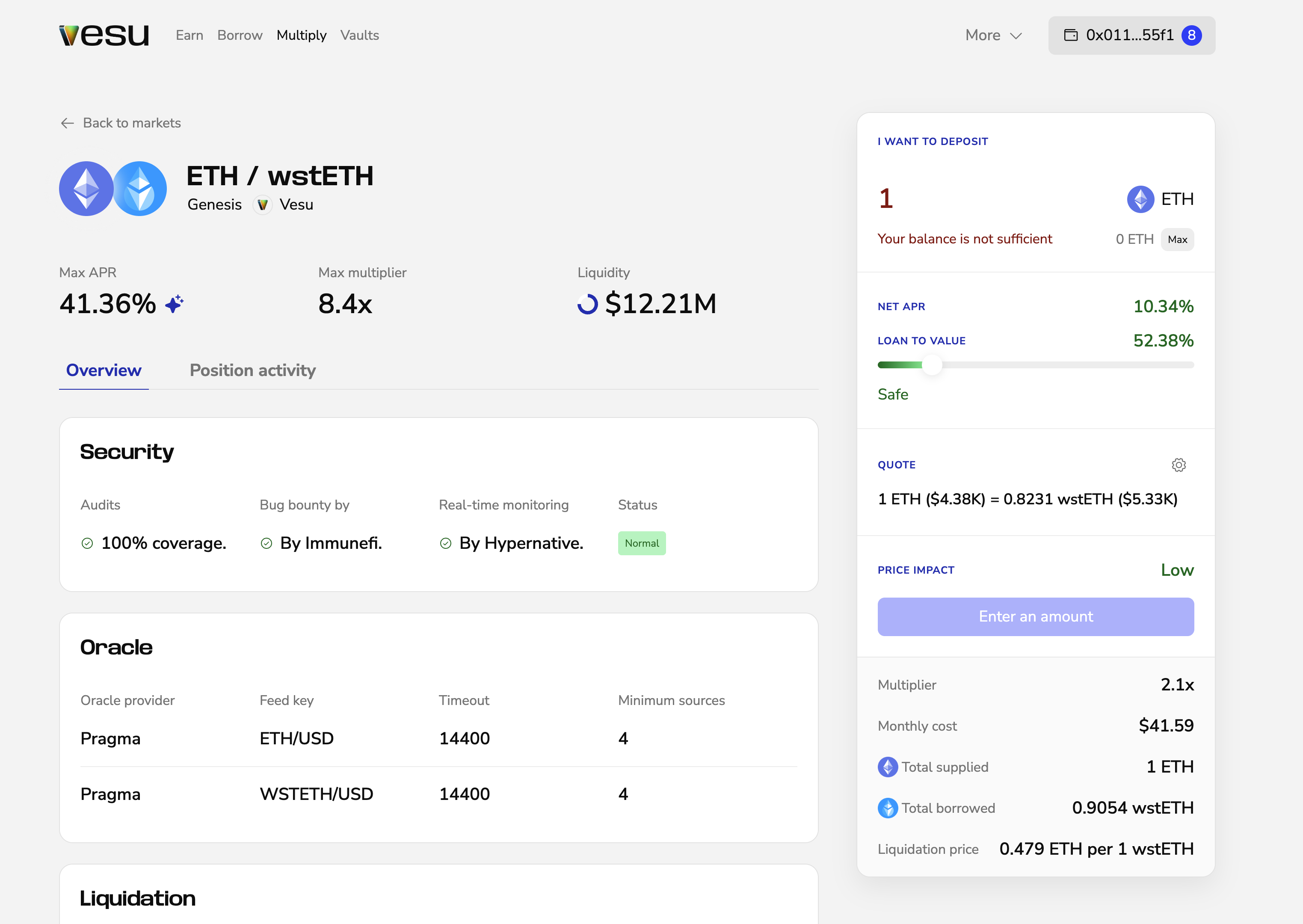How to Multiply
This guide walks you through opening and closing a Multiply position.
Opening a Position
Use Multiply to increase your exposure and yield for a specific asset.
- Go to vesu.xyz/multiply and pick a market. Use the filters to choose your collateral/borrow pair. You can also show only tokens in your wallet, or filter by curator and pool.

- On the market page, check the key info for that pair: Net APR, max multiplier, liquidity, liquidation price, and loan-to-value.

-
Enter the amount you want to deposit and choose your Loan to value. The borrow amount is calculated automatically. Make sure you’re comfortable with the shown monthly yield/cost, liquidation price, and multiplier.
-
Click Start multiplying and confirm in your wallet.
Once confirmed, your position appears in your overview and starts accruing according to the displayed net APR.
Closing a Position
To close a Multiply position:
-
Click the button showing your connected wallet in the top-right corner. This opens the side navigation with your open positions. Select the position you want to close.
-
Click Close and approve the transaction in your wallet.
-
Once confirmed, the position unwinds and your collateral returns to your wallet.